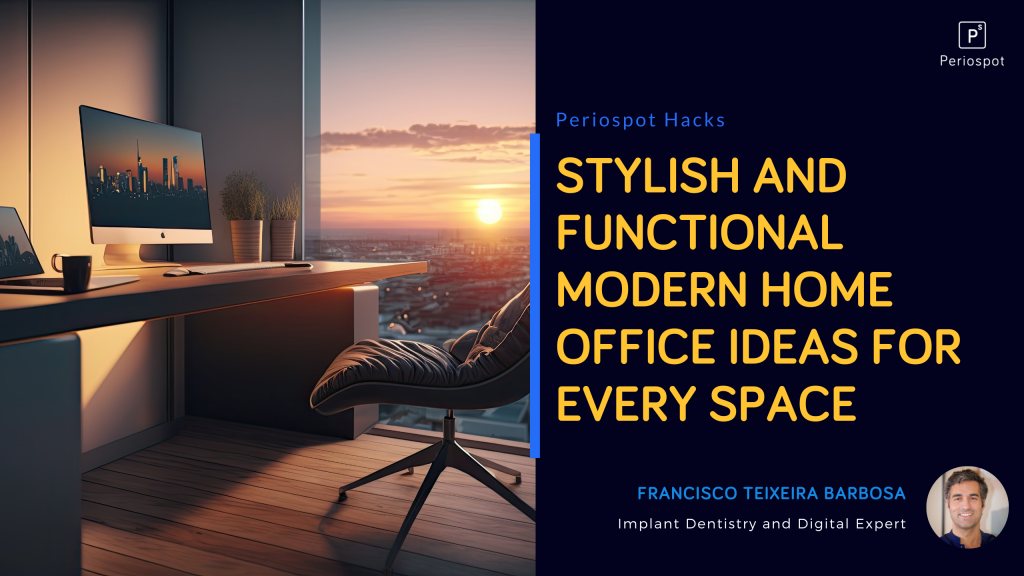Creating a stylish and functional home office has become increasingly important as more people continue to work from home. In this comprehensive guide to modern space use, we’ll explore modern home office ideas that cater to various needs and preferences, helping you design the perfect workspace to boost productivity and comfort.
As a work-from-home veteran who navigated this transition myself, I can attest to the many challenges and unexpected surprises that came with this new way of working.
During the pandemic, my home suddenly became a bustling hub of activity, with online meetings, the constant presence of my five (yes, five!) children, and the never-ending quest to find a quiet corner for a video call. My kids quickly became Zoom stars, making impromptu appearances in virtual meetings, showcasing their latest Lego creations, or simply wandering into the frame, blissfully unaware of the serious business discussions taking place. While these moments brought laughter and a much-needed dose of humor to our remote workdays, they highlighted the importance of creating a dedicated, organized, personalized home office space.
Despite the many challenges, the work-from-home experience has also brought numerous benefits, such as increased flexibility, reduced commuting time, and the ability to tailor our workspaces to our unique needs and preferences. As we continue to adapt to this new normal, it’s crucial to design a more modern home office space that is visually appealing and supports productivity, comfort, and well-being. This article will explore various aspects of creating the perfect modern home office, from assessing your space and choosing the right furniture to optimizing lighting and incorporating the latest tech gadgets and accessories.
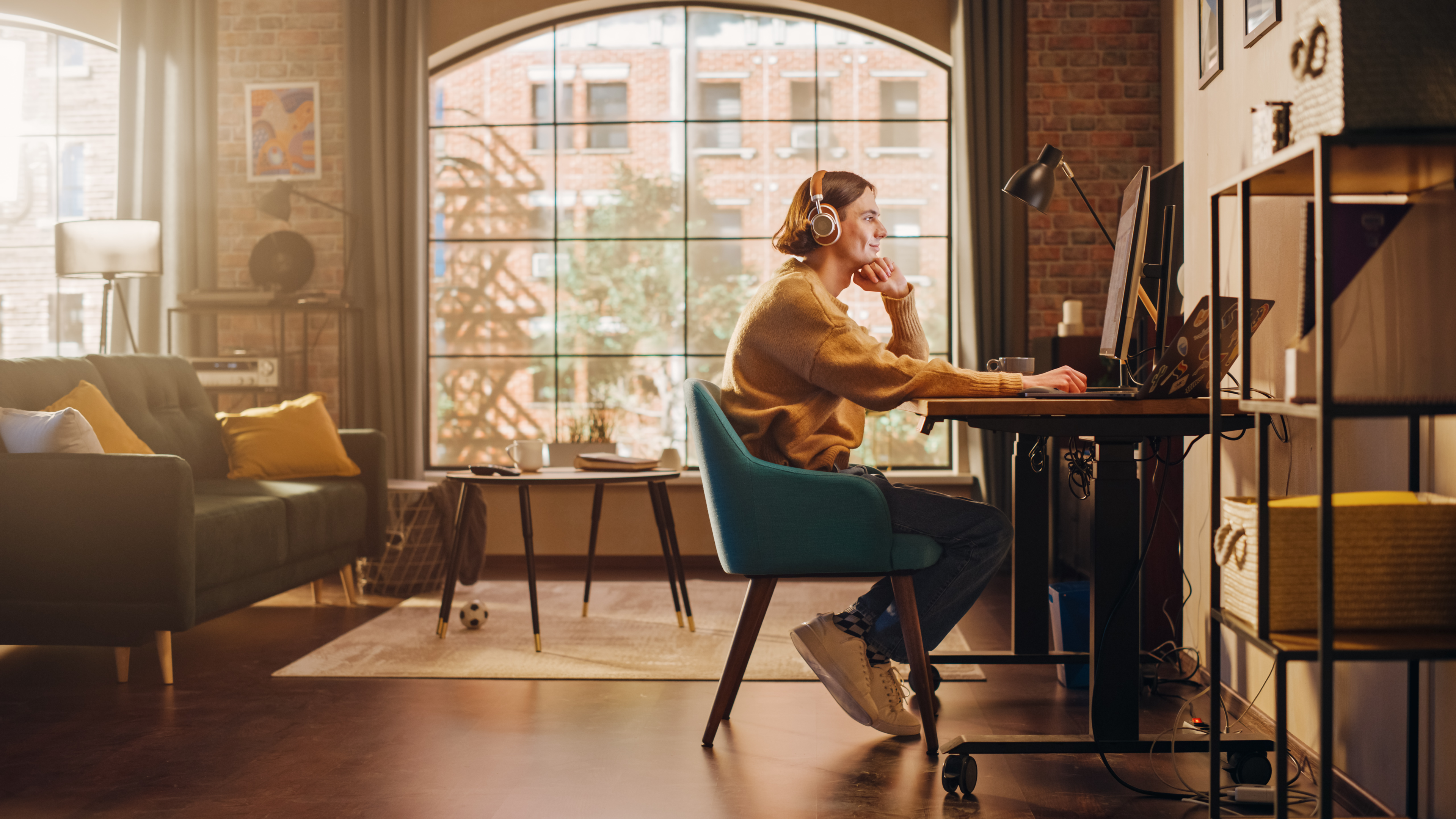
(Assessing Your Space) Evaluate Your Available Space and Requirements
Before diving into design ideas, it’s essential to assess the available space in your home and determine your specific needs. Consider factors such as room size, layout, and the type of work you’ll be doing. This will help you create a tailored plan that optimizes functionality and aesthetics.

(Creating an Innovative Home Office Designs Layout) Design an Efficient and Stylish Workspace Layout
- A well-planned layout is crucial for a functional home office. Keep in mind the following tips when designing your workspace:
- Ensure adequate circulation space for movement
- Position your desk near a natural light source
- Place frequently used items within easy reach
- Allocate space for storage and organization solutions
- Consider incorporating a dedicated area for breaks and relaxation
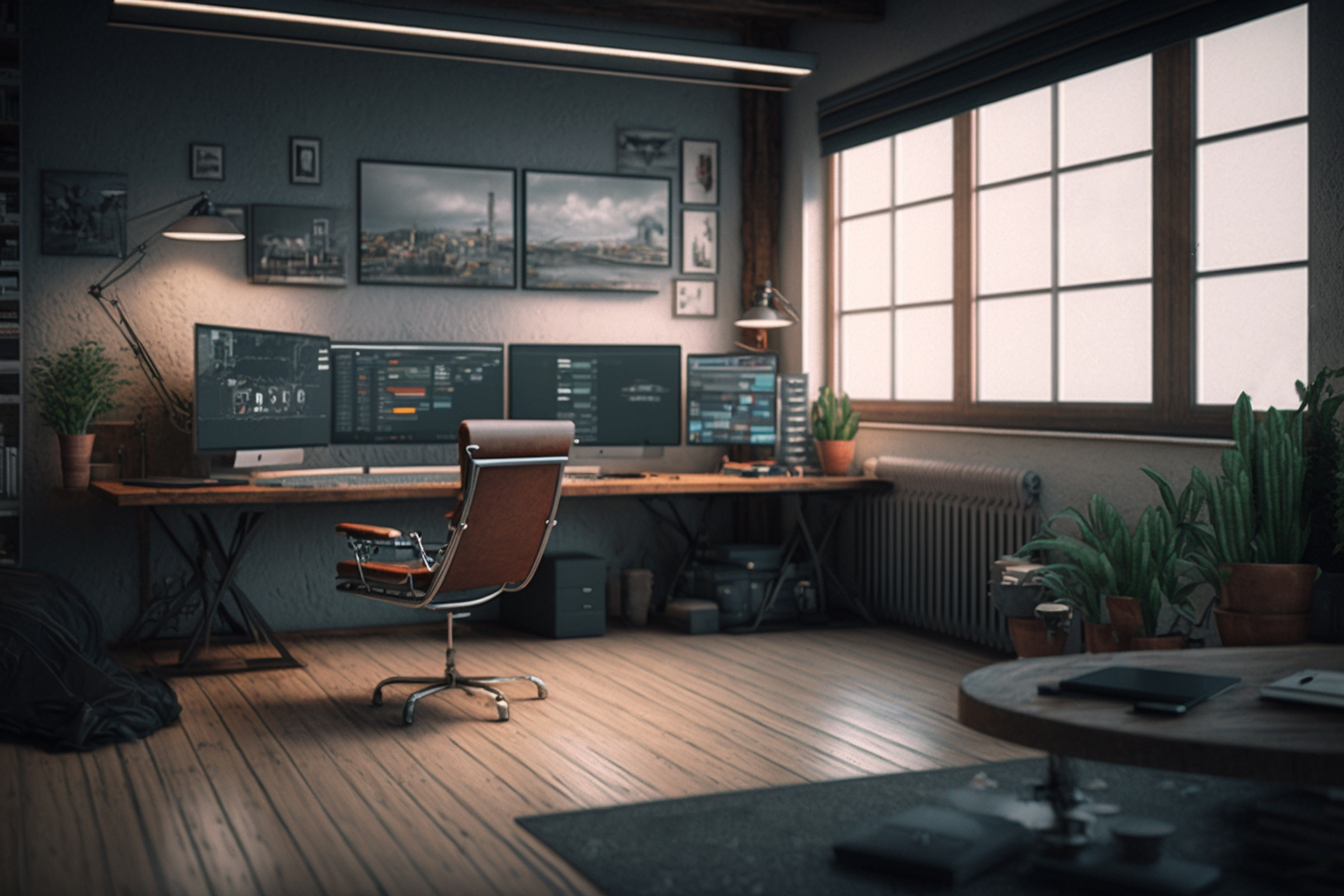
(Choosing the Right Furniture) Selecting Modern and Ergonomic Furniture
Invest in modern, ergonomic furniture to create a comfortable and visually appealing workspace. Key pieces to consider include:
- An adjustable, ergonomic chair for proper posture
- A spacious desk that accommodates your work equipment
- Stylish storage solutions, such as bookshelves and filing cabinets
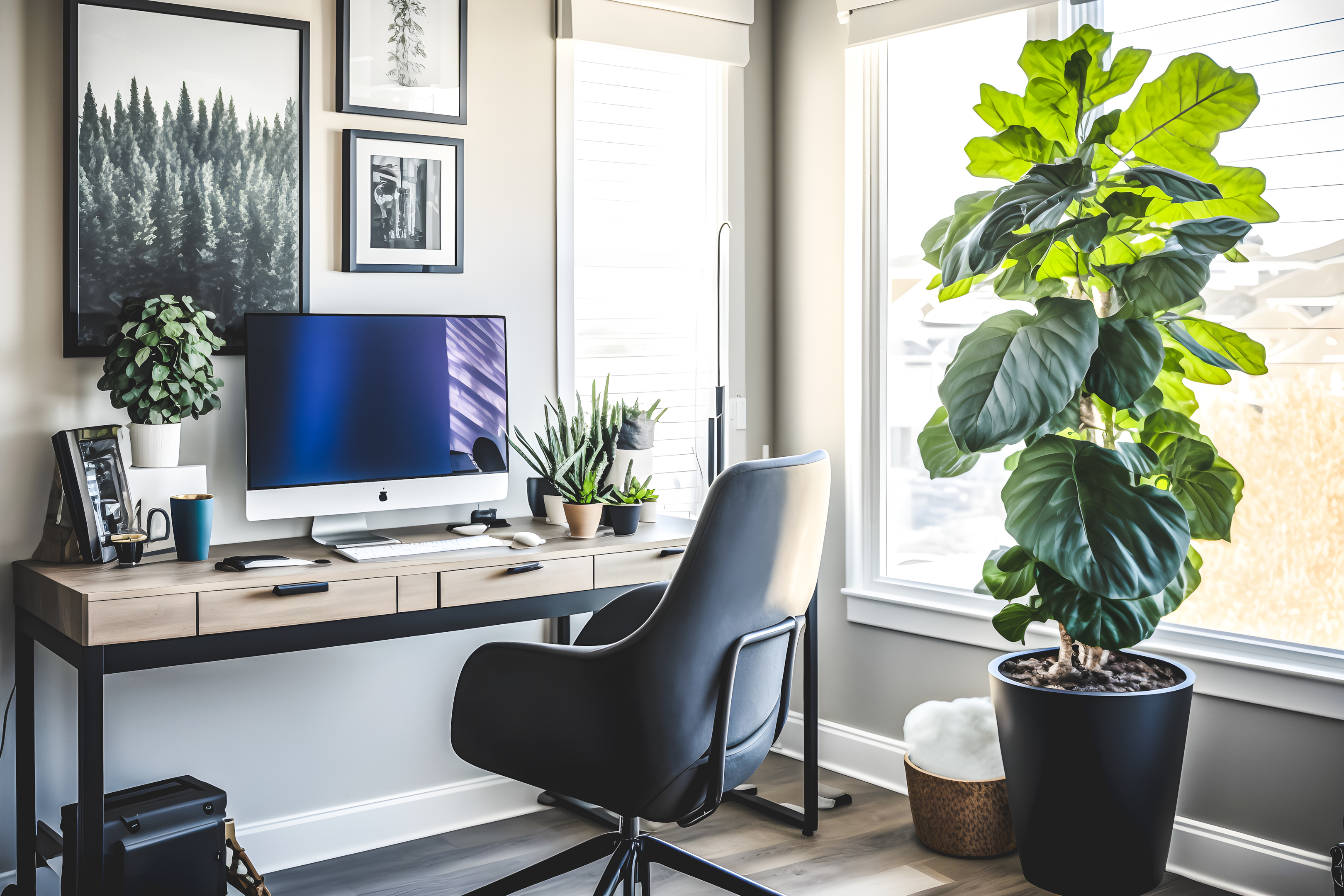
(Lighting Your Space) Optimize Lighting for Comfort and Productivity
Adequate lighting is crucial for a comfortable and productive work environment. Ensure a mix of natural, ambient, and task lighting to create a well-lit space that minimizes eye strain and fatigue. Consider the following tips:
- Position your desk near a window for natural light
- Install overhead lighting or floor lamps for ambient lighting
- Use desk lamps or adjustable task lights for focused illumination
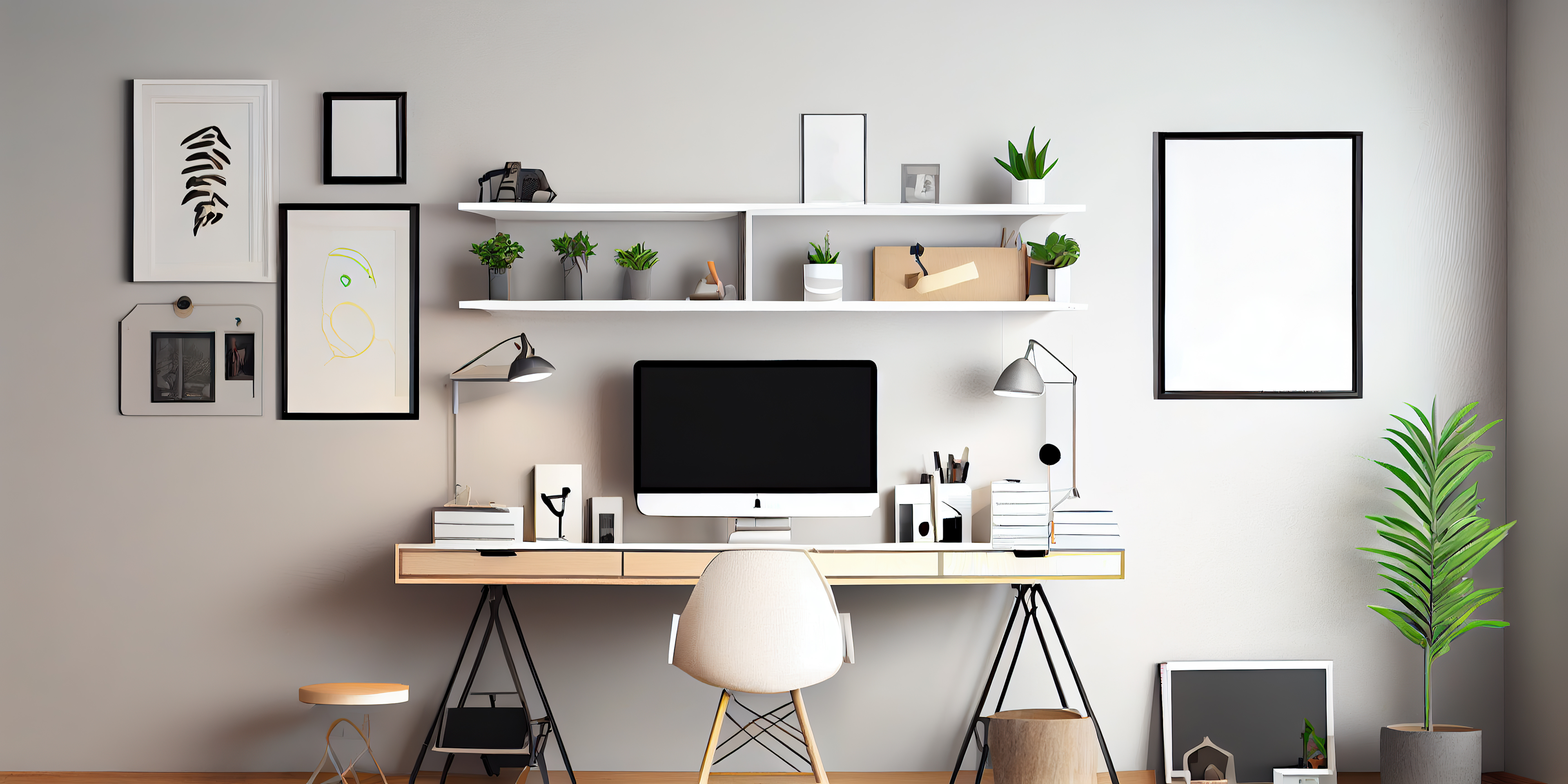
(Incorporate Additional Seating and Workspace Areas) Creating a Versatile and Multifunctional Home Office
To enhance the functionality and comfort of your home office, consider incorporating additional seating and workspace areas or dedicated space. This can be particularly useful for accommodating various work tasks, hosting clients, or taking breaks throughout the day. Some ideas include:
- A cozy reading nook with a comfortable armchair and side table
- A dedicated meeting area with a small table and chairs
- A standing desk or sit-stand desk converter for a change of pace
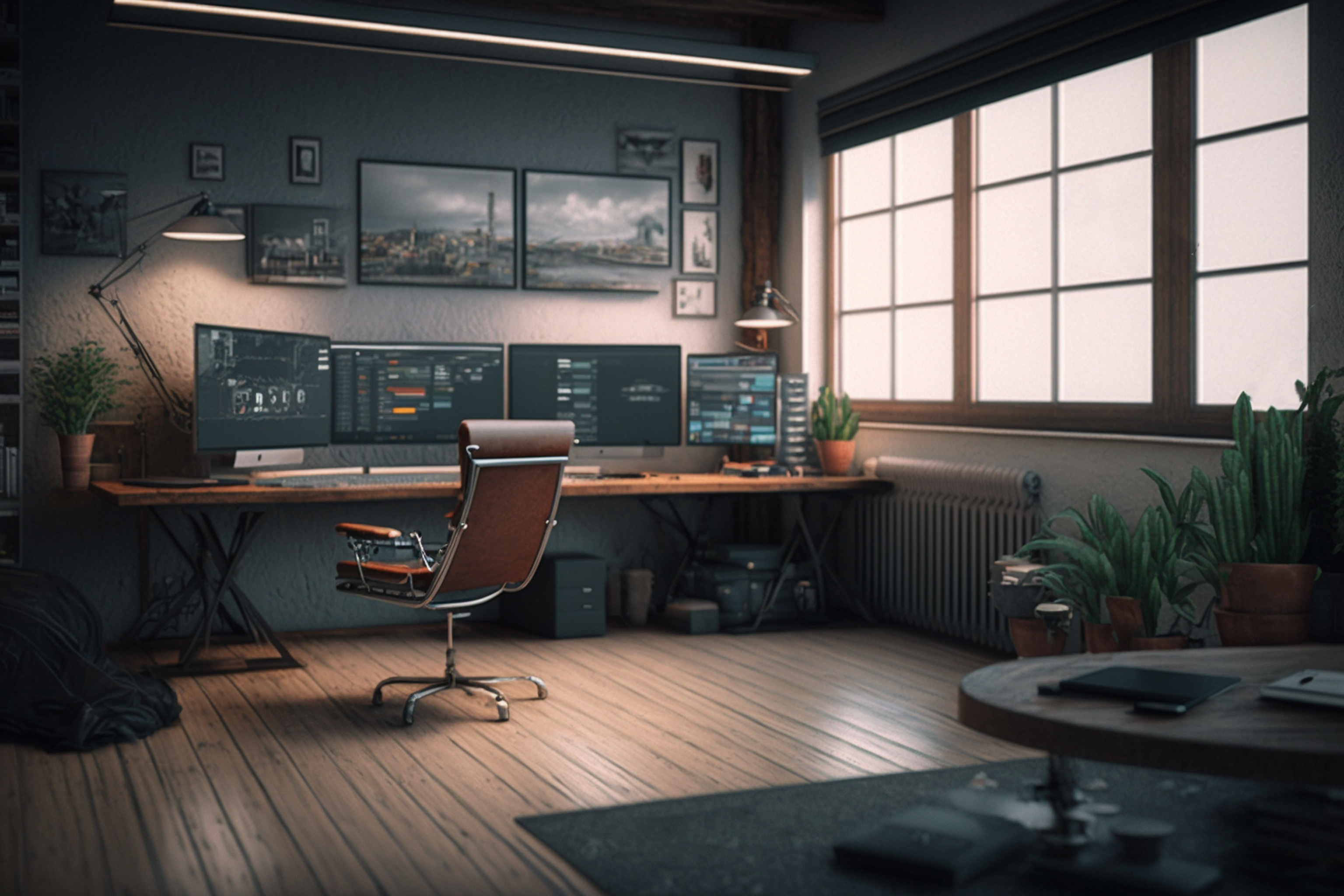
(Modern Office Design Elements) Incorporating Modern Design Principles and Aesthetics
To achieve a modern look in your home office, incorporate elements of modern style such as clean lines, minimalism, and a mix of materials. Here are some design ideas to help you create a visually appealing and contemporary workspace:
- Opt for a neutral color palette with pops of color through accessories and artwork
- Choose furniture with sleek lines and minimalist designs
- Incorporate a mix of materials, such as wood, metal, and glass, for visual interest
- Add statement pieces, like a bold light fixture or eye-catching artwork, to make the space uniquely yours
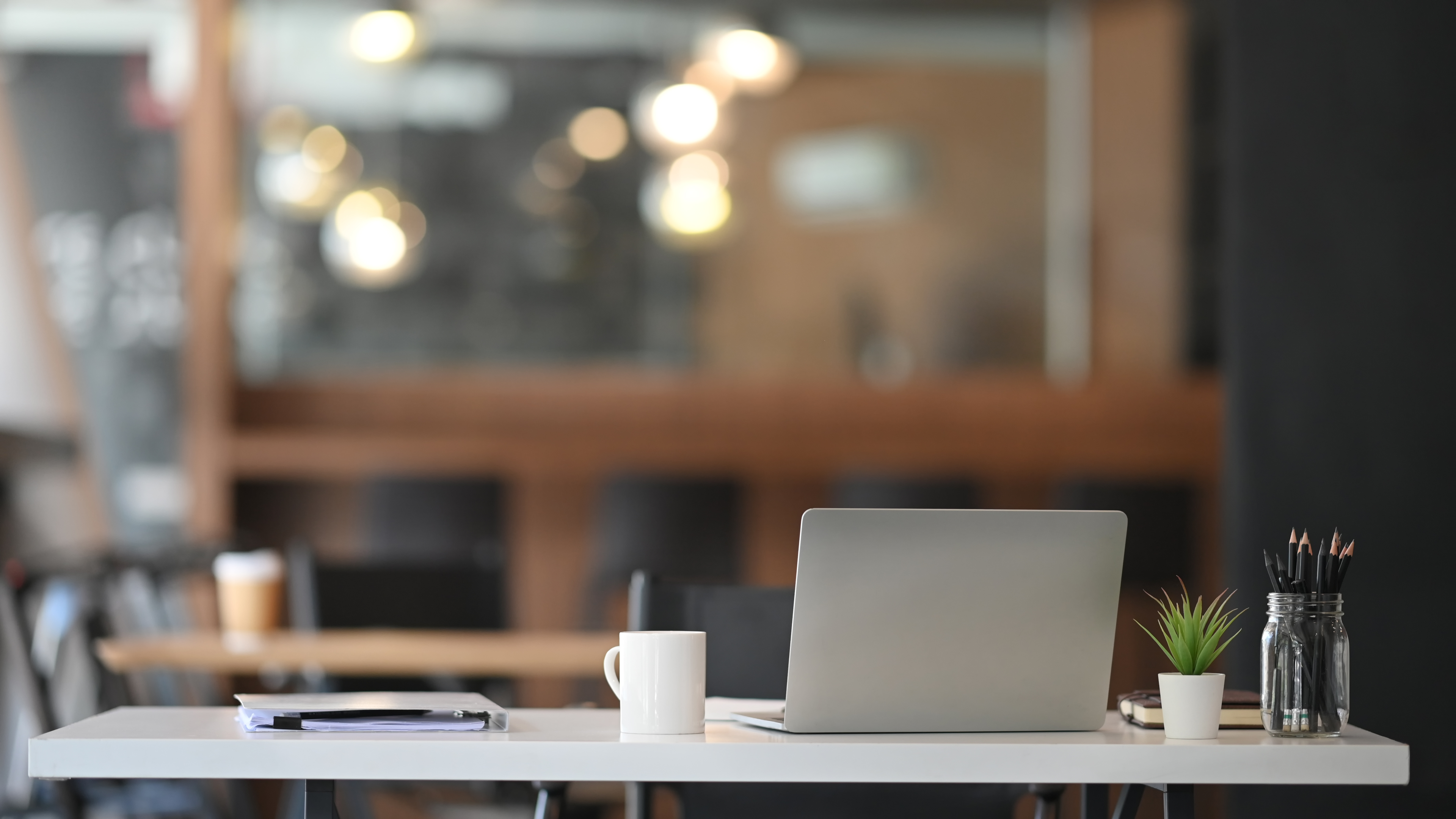
(Personalizing Your Workspace) Making Your Home Office Your Own
Personalize your home office by adding elements that reflect your personality and style. This will make your workspace more inviting and enjoyable. Consider the following home office design ideas:
- Display artwork or photography that resonates with you
- Add plants or greenery for a touch of nature and improved air quality
- Include personal items, such as family photos or mementos, for inspiration and motivation
- Choose accessories and decorative items in your favorite colors or patterns
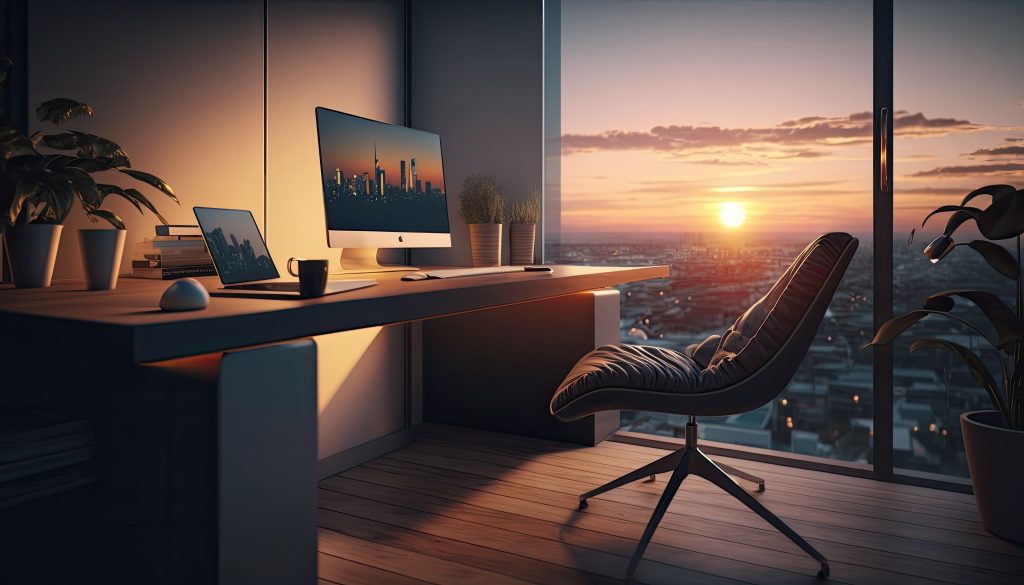
(Staying Organized) Implementing Smart Storage Solutions and Organization Strategies
Maintain a clutter-free and efficient workspace by implementing smart storage solutions and organization strategies. Here are some ideas to help you keep your desk chair and your home office neat and tidy:
- Use bookshelves, filing cabinets, or wall-mounted shelves to store documents and reference materials.
- Incorporate desktop organizers, drawer dividers, or pegboards to keep small items in order and within reach.
- Utilize digital tools and apps to manage tasks, schedules, and notes, reducing the need for physical clutter.

(Optimizing Productivity) Designing a Workspace that Enhances Focus and Efficiency
Create a workspace that encourages productivity by minimizing distractions and optimizing comfort. Consider the following tips for an efficient and focused home office setup:
- Choose a dedicated and quiet space for your office, away from household noise and interruptions.
- Set up a routine and establish boundaries to maintain a healthy work-life balance.
- Create a visually appealing and comfortable workspace that inspires focus and creativity.

(Equip Your Modern Office with the Right Tech Gadgets and Accessories) Ensuring Seamless Connectivity and Productivity
Equip your workspace with essential tech gadgets and accessories, such as a laptop or desktop computer, an ergonomic keyboard and mouse, a high-quality webcam and microphone for video calls, and a multi-functional printer. These elements will help ensure seamless connectivity and productivity.
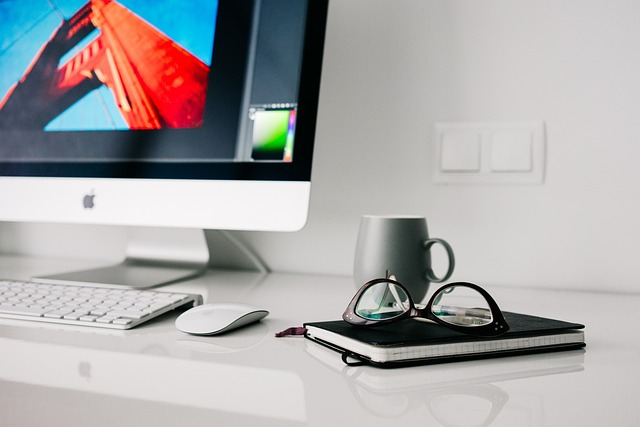
(Acoustic Considerations) Soundproofing and Managing Acoustics for a Focused Work Environment
Soundproofing and managing acoustics in your home office can help reduce distractions and create a more focused work environment. Here are some tips for optimizing acoustics in your home office desk and space:
Install soundproofing materials, such as acoustic panels or soundproof curtains, to reduce noise transmission.
Use area rugs, floor cushions, or upholstered furniture to make space help absorb and diffuse sound.
Consider using a white noise machine or noise-canceling headphones to block out external noise and improve focus.
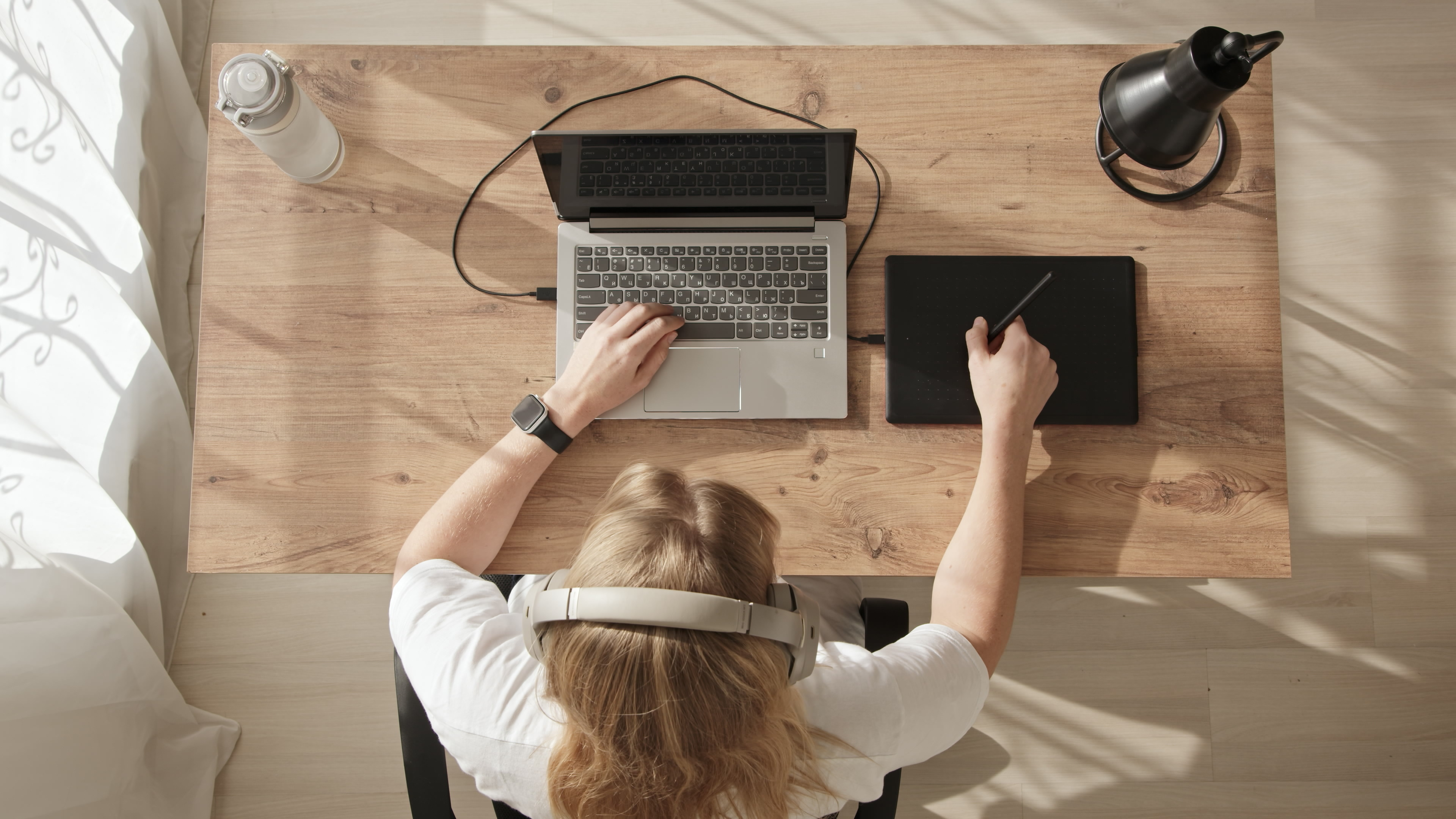
(Eco-friendly Home Office) Incorporating Sustainable and Environmentally Friendly Elements
Create an eco-friendly home office by incorporating sustainable materials and energy-efficient practices. This not only benefits the environment but can also contribute to a healthier and more comfortable workspace. Here are some tips for creating a green home office:
- Choose furniture and accessories made from sustainable materials, such as reclaimed wood, bamboo, or recycled metals.
- Opt for energy-efficient lighting, such as LED bulbs or task lamps with dimmer switches.
- Implement energy-saving habits, like turning off electronics when not in use and using natural light whenever possible.
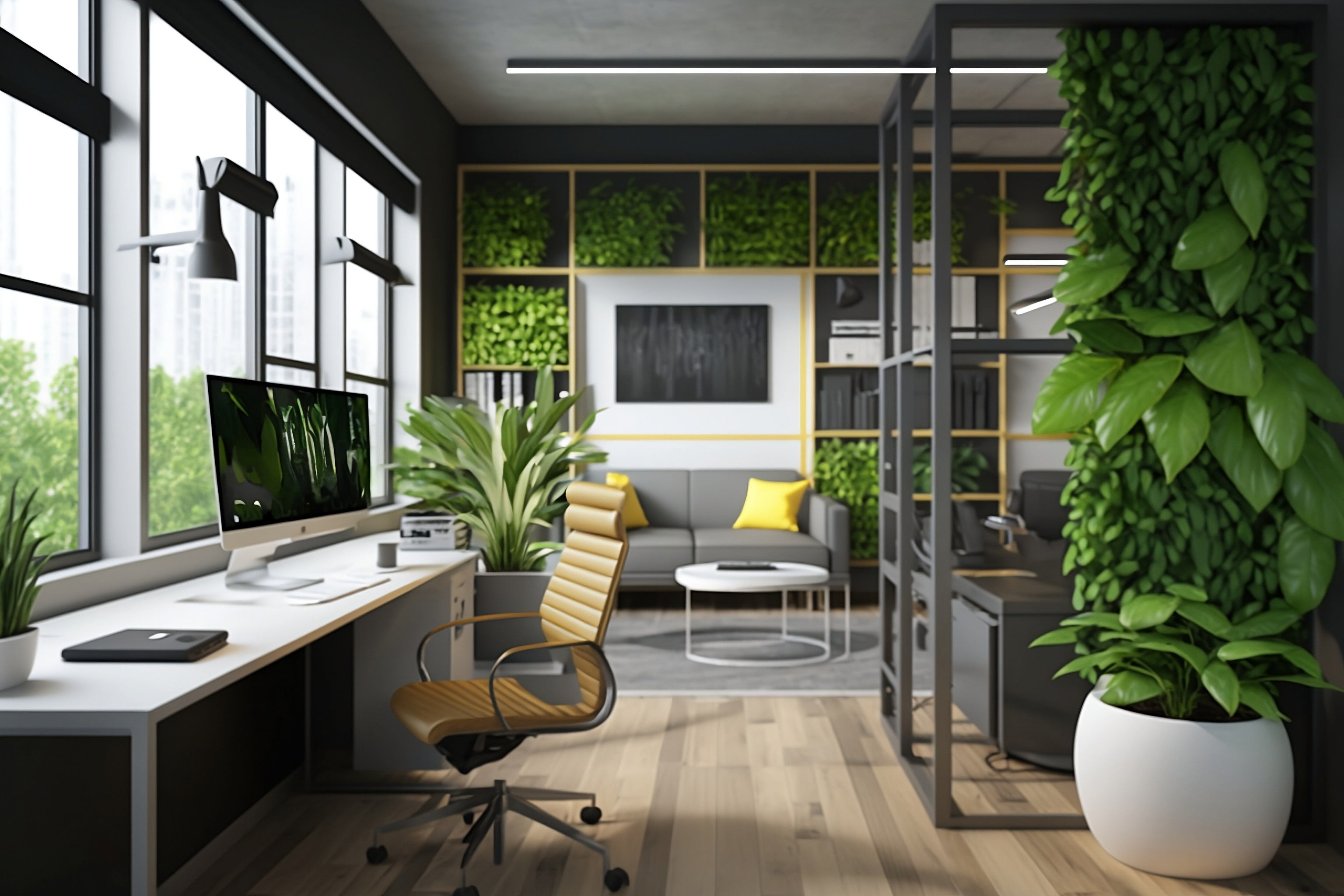
(Designing Small Home Offices) Making the Most of Limited Space
Designing a small home office can be challenging, but with careful planning and creative solutions, you can maximize your space and create a functional and visually appealing workspace. Here are some tips to address common questions related to designing small home offices:
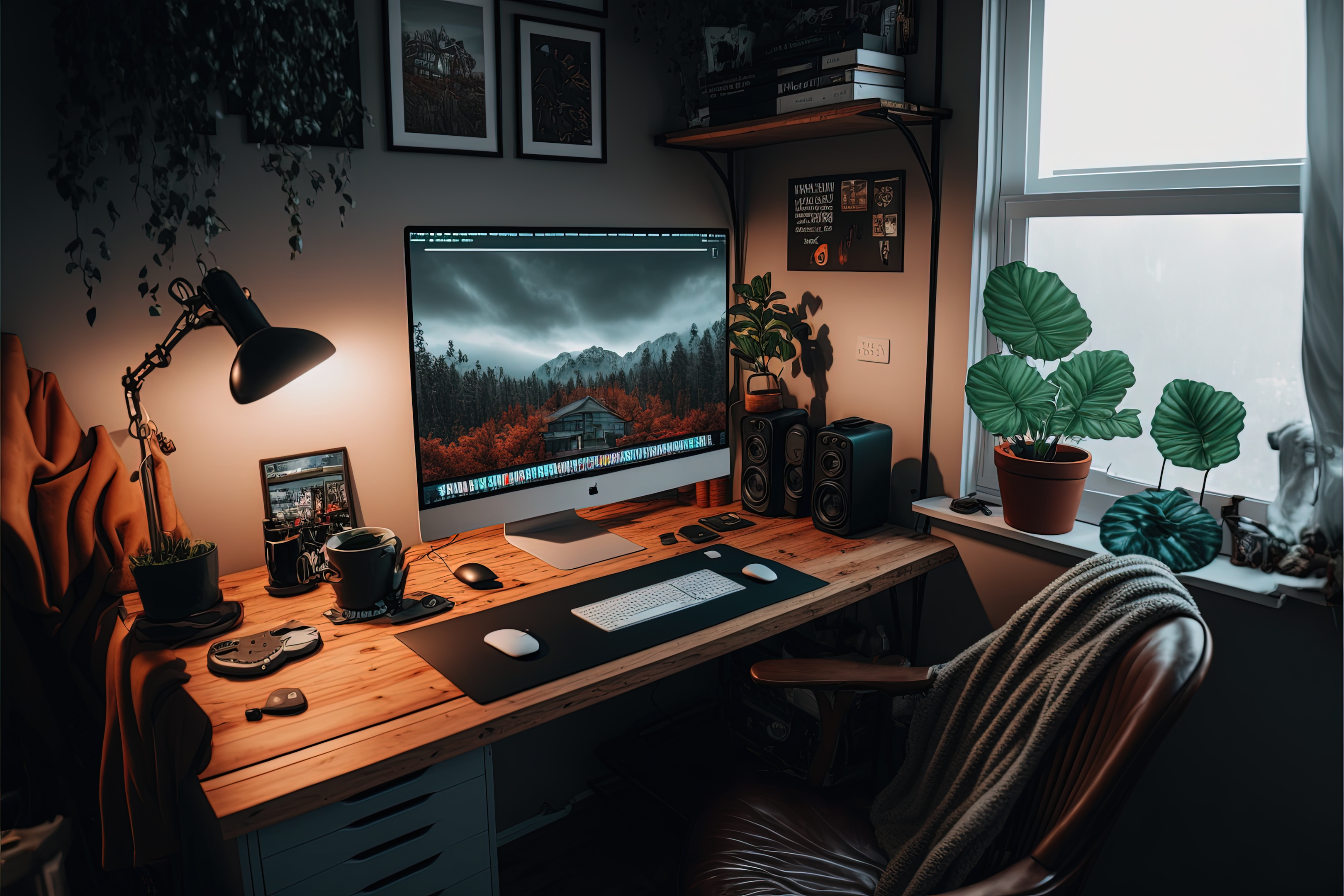
(Maximizing Space in a Small Home Office) Clever Storage and Space-Saving Solutions
To maximize storage space in your small home office, consider these space-saving and storage ideas:
- Use vertical space: Install wall-mounted shelves, floating desks, or pegboards to save floor space and keep items within easy reach.
- Choose multi-functional furniture: Opt for pieces that serve multiple purposes, such as a desk with built-in storage or a fold-out table that can double as a workspace and dining area.
- Use under-desk storage: Rolling carts, filing cabinets, or storage boxes keep items organized and out of sight.
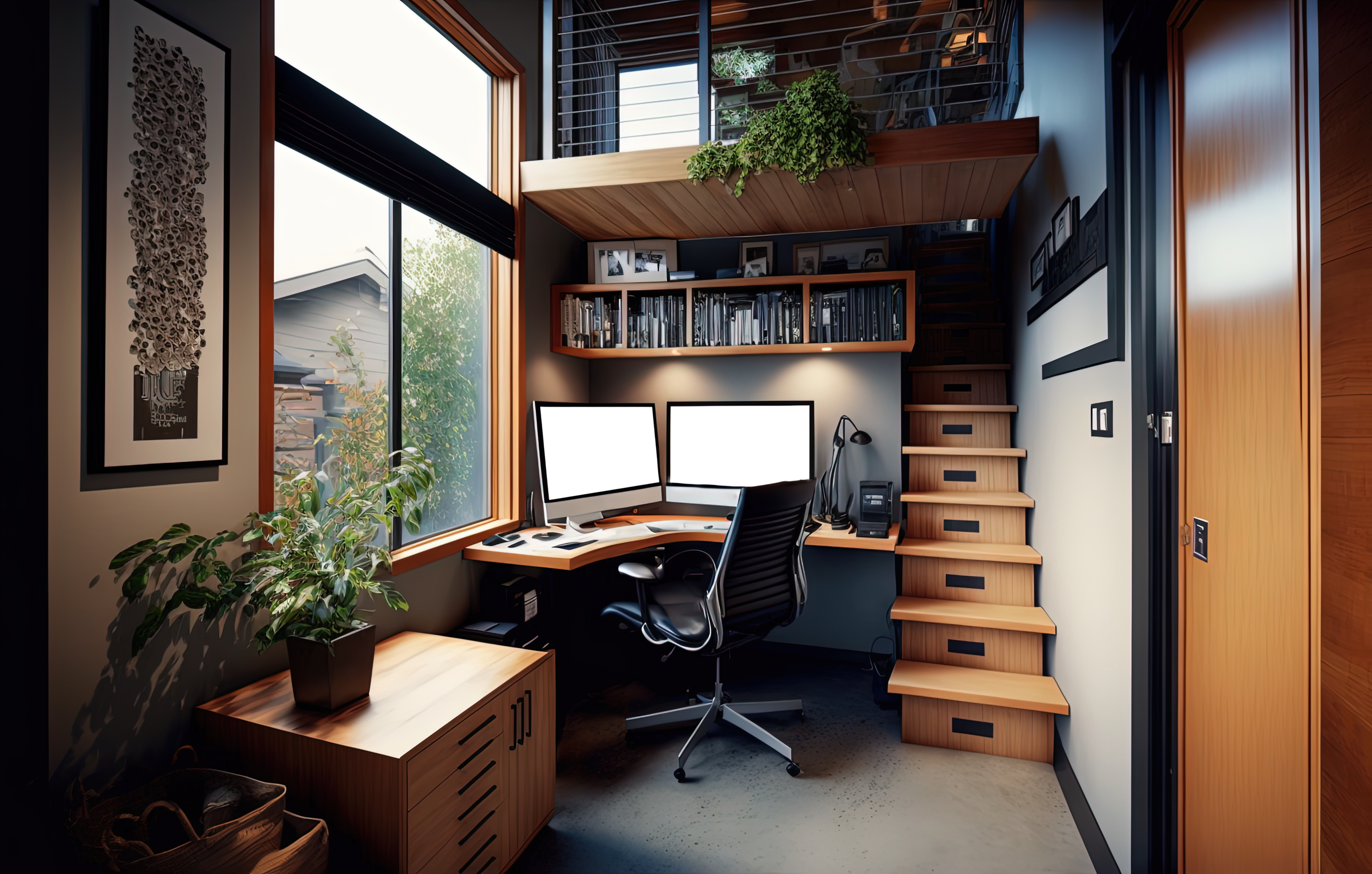
(Making a Small Office Look Good) Design Tips for Small Office Spaces
To make your small office look good and visually appealing, consider these design tips:
- Use light colors: Light and neutral color palettes can make a small space appear larger and more open.
- Incorporate mirrors: Mirrors can reflect light and create the illusion of a larger space.
- Opt for minimalism: Keep your workspace clutter-free and choose furniture with simple, clean lines to create a sense of openness.

(Designing a Small Office) Planning and Layout Tips
When designing a small, modern office space, follow these planning and layout tips:
- Assess your needs: Determine what functions your office needs to serve and prioritize the essentials
- Measure your space: Accurately measure your space to ensure furniture and equipment will fit comfortably
- Plan your layout: Create a floor plan, considering factors like natural light, accessibility, and workflow
By following these tips and incorporating clever design solutions, you can create a small home office or guest room that is both functional and visually appealing, maximizing your limited space and promoting productivity.
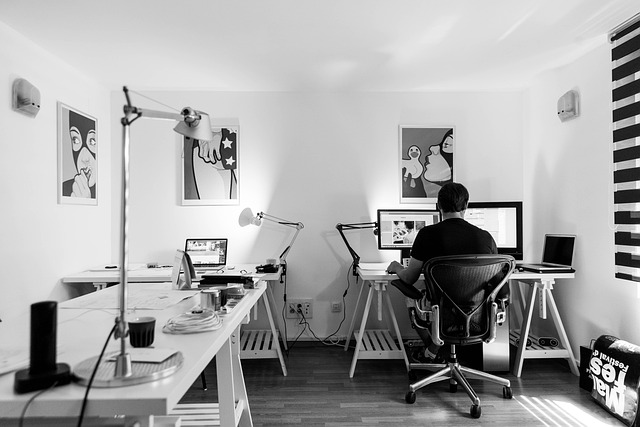
Focusing Techniques and a Sample Home Office Day Agenda
Staying focused and productive while working from home can be challenging, especially when dealing with distractions such as household chores, family members, or the temptation to scroll through social media. Implementing effective focusing techniques can help you maintain productivity and make the most of your workday. Here are some strategies to improve your focus while working from home:
Pomodoro Technique: Break your workday into 25-minute intervals (called Pomodoros) followed by a 5-minute break. After completing four Pomodoros, take a more extended break of 15-30 minutes. This method encourages intense focus during work sessions and allows for regular mental recovery breaks.
Time Blocking: Schedule specific tasks or activities for designated time slots throughout the day. This can help you stay focused on one task at a time and prevent multitasking or task-switching, which can reduce productivity.
Eliminate Distractions: Identify and minimize sources of distraction in your workspace, such as turning off notifications on your phone or using noise-canceling headphones to block out background noise.
Set Daily Goals: Begin each day by setting clear, achievable goals for what you want to accomplish. This can help you stay focused and motivated as you work towards completing each task.
Practice Mindfulness: Incorporate mindfulness techniques, such as deep breathing exercises or short meditation sessions, into your daily routine to improve focus, reduce stress, and enhance overall well-being.
To help illustrate how these focusing techniques can be applied, here’s an example of a daily home office agenda:
8:00 am – 8:30 am: Review daily goals and priorities, and set a clear intention for the day.
8:30 am – 9:25 am: First Pomodoro – work on a high-priority task with complete focus.
9:25 am – 9:30 am: 5-minute break – stretch, grab a drink or do a quick mindfulness exercise.
9:30 am – 10:25 am: Second Pomodoro – continue working on the high-priority task.
10:25 am – 10:30 am: 5-minute break.
10:30 am – 11:25 am: Third Pomodoro – work on another important task.
11:25 am – 11:30 am: 5-minute break.
11:30 am – 12:25 pm: Fourth Pomodoro – complete a smaller task or respond to emails.
12:25 pm – 1:00 pm: 35-minute lunch break – eat a healthy meal, take a walk, or chat with a friend or family member.
1:00 pm – 2:25 pm: Time block for a scheduled virtual meeting or collaboration session.
2:25 pm – 2:30 pm: 5-minute break.
2:30 pm – 3:25 pm: Fifth Pomodoro – work on any remaining tasks or projects.
3:25 pm – 3:30 pm: 5-minute break.
3:30 pm – 4:25 pm: Sixth Pomodoro – wrap up loose ends and update progress on daily goals.
4:25 pm – 4:30 pm: 5-minute break.
4:30 pm – 5:00 pm: Time block for administrative tasks, such as updating project status, organizing files, or planning for the next day.
5:00 pm – 5:30 pm: Wind-down routine – review your accomplishments for the day, reflect on any challenges or lessons learned, and mentally prepare to transition from work to personal time.
Another powerful focusing technique that can be highly effective for remote work is the concept of “deep work,” introduced by Cal Newport in his book of the same name. Deep work is the ability to engage in cognitively demanding tasks without distraction, allowing you to produce high-quality results in less time.
According to Newport, deep work is essential for achieving peak productivity and mastering complex skills in today’s knowledge-based economy.
In his book, Newport outlines several rules and strategies to help cultivate a deep work mindset and maximize productivity while working from home:
Work deeply: Schedule blocks of time for deep work, where you can focus on challenging tasks without interruptions. Set clear boundaries around this time, and inform family members or housemates when you’re engaging in deep work to minimize distractions.
Embrace boredom: Train yourself to resist the temptation of checking your phone or browsing social media during moments of boredom. Instead, use these moments to reflect, recharge, or engage in deliberate practice.
Quit social media: While this may seem drastic, reducing or eliminating your use of social media can help minimize distractions and free up more time for deep work. If quitting entirely isn’t feasible, consider limiting your daily social media usage.
Drain the shallows: Identify and reduce shallow tasks, such as answering non-urgent emails or attending low-value meetings, which can consume valuable time and prevent you from engaging in deep work. Delegate, automate or batch these tasks to maximize the time available for focused, high-priority work.
By implementing these deep work principles, you can create an environment that fosters focused productivity and enhances your ability to tackle complex tasks while working from home. Embracing deep work can help you unlock your full potential, sharpen your skills, and achieve greater accomplishment and satisfaction in your work.
Also, incorporating these focus techniques and establishing a structured daily agenda can enhance productivity and maintain a healthy work-life balance. Remember that it’s essential to prioritize your well-being while working from home, so be sure to include regular breaks, physical activity, and social interaction (even if it’s virtual) to avoid burnout and maintain overall mental health.
Final thoughts
Designing a modern, functional, and comfortable home office is essential for those working from home, whether it’s a temporary arrangement or a long-term shift. A well-designed home office can significantly enhance productivity, work-life balance, and well-being. However, working from a contemporary home office also presents challenges that should be addressed to maintain a healthy lifestyle and prevent feelings of isolation or burnout.
The benefits of using modern home offices and working from home include increased flexibility, reduced commuting time, and the ability to customize your workspace to suit your needs and preferences. By following the tips and strategies provided in this article, you can create a stylish, ergonomic, and efficient home office that supports your unique work style and promotes success.
On the other hand, working from home may lead to a sedentary lifestyle, feelings of isolation, and difficulty separating work and personal life. To combat these challenges, it’s essential to prioritize wellness, movement, and social interaction. Here are some recommendations to stay healthy, both physically and mentally, while working from home:
Exercise regularly: Schedule time for daily physical activity, whether it’s a home workout, a walk around the neighborhood, or a yoga session. Exercise can help reduce stress, improve mood, and maintain physical health.
Break up your workday: Take regular breaks throughout the day to stretch, move, or engage in a brief non-work-related activity. This can help prevent burnout and improve focus.
Stay connected: Schedule virtual coffee meetings, video calls, or group chats to stay in touch with colleagues, friends, and family. Maintaining social connections can help alleviate feelings of isolation and loneliness.
Practice self-care: Allocate time for relaxation, hobbies, and personal interests outside work hours. Reading, meditating, or engaging in creative pursuits can help balance work and personal life.
Set boundaries: Establish clear boundaries between work and personal spaces in your home. Create a designated workspace and avoid working in areas for relaxation, such as the bedroom, dining room, or living room.
In conclusion, working from home presents both opportunities and challenges. By designing a comfortable, functional, and personalized home office space and incorporating healthy habits into your daily routine, you can maximize the work-from-home experience and maintain a balanced and fulfilling lifestyle.
